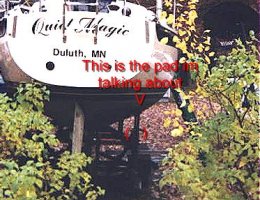Quiet Magic
Member II
When we pulled our boat out of the water last october, I was looking along the hull and noticed that the furthest aft pad on the starboard side was creating quite a large dent in the hull. In response I unscrewed and loosned the pad. Upon returning to the boat the next weekend I noticed the dent was indeed gone but, by tighting the pad the hull would flex in that spot. My question is:is this a "soft spot" in the hull and should I be really worried about it or is it nothing? And if it is a real problem how do I go about fixing something structrual like that? (this isnt the best photo)
(this isnt the best photo)
Thnx for any help

Thnx for any help

